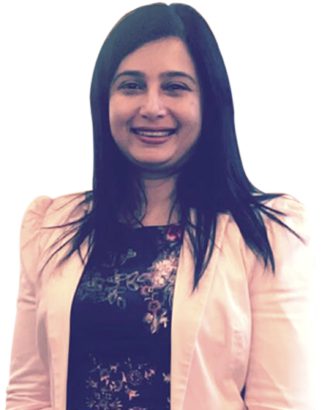“Measurement” can be termed as one of the wisest discoveries made by human beings. This discovery was helpful in gaining the knowledge of quantity in our Social life as well as in the world of Science. Imagine a world in the absence of Time, Size, Distance, Temperature, Speed or Weight which are a few basic measures that have simplified our life to a great extent. Human history has witnessed since an ancient age our ability to comprehend, discover further and more, and adapt certain physical standards in life. The approach and process of measurement have been an important building block in our day today life, where we, voluntarily or involuntarily, tend to measure many aspects including our Knowledge, Ability & Shortcomings.
As the Management Guru Peter Drucker famously said, “You can’t improve what you don’t measure.”, the ultimate goal of any type of measurement is to improve ourselves in respective areas.
You should measure things you care about. If you’re not measuring, you don’t care and you don’t know.”
-Steve Howard

The Importance of Measurement
1. In Personal Life
The measurement in personal life is a bit fluid as compared to scientific yardsticks. The Measurement in our daily life is not necessarily always about measuring against a physical parameter, it can be around increasing awareness, developing the knowledge, adapting new practices and monitoring the progress. There are definitely goals that can be measured such as losing pounds and inches, medical records or learning to drive or swim.
In personal life, measurements are individualistic if it is a personal goal and are collective if it is a group related goal. In any case, following a few defined steps can help set a structure around measurement.
Step 1 : start with building awareness: The first step should be to understand the present scenario in your lifestyle and what you aim to achieve. This helps to measure the extent of clarity you have of our ambition. The simpler the ambition statement, better is the measurement – ‘ I want to learn to swim in one month’ ‘I want to lose 8 pounds in two months’.
Step 2 : Strategies an action plan and measure milestones: Never bite more than you can chew. So build a plan that will help you evaluate the progress and outcome. Take help of manual or digital organizers to record your plan and set measurement criteria.

Step 3 : Time for action: Regularize your schedule and monitor actions against the plan you have built.
Step 4 : Pause, reflect, share: Have a checkpoint measurement to assess how far you are from the goal. Are you on track? Do you need to revise a step or two? Do you need to include additional action? and so on. Collective activities are easy to monitor while if you are on an individualistic goal, share your ambition with friends or family who can be the neutral party to assess your performance and give feedback to motivate you and help improve.
Step 5 : Time to close. The D-day is here: You have accomplished your goal. Measure it against the clarity you had in step 1 and measurement criteria from step 2. Celebrate your success and also record what you did well and what you will do better next time. Don’t focus only on the outcome, also on the journey that you helped you get there.

All the above steps mention measurement in one way or the other as these are all different ways to measure the manner in which you improve and reach your ambition.
So it can be inferred that achieving our goals depends upon how well we measure them; right from setting the goal, planning for it and achieving it. As the approach of measurement focuses on both the final outcome and the journey towards it, we end up developing a measurement system that gets adapted into a daily routine. With such a system in place, our days are shaped in a disciplined manner to utilize our time and energy appropriately.
2. In Professional Life
“Measurement” in professional life is not very different to that of personal life. A clear distinction is that in professional life, there are established pre-set measurements and protocols to measure success. This helps as a great direction to start off. Additionally there is an ecosystem of leaders (line managers, teachers, coaches, mentors) experts (colleagues, peers, students), and reporting teams that aids the entire process. The performance measurement is more disciplined in a professional environment and is done periodically through systems and processes.
“Key Performance Indicator” known as KPI tool is used to measure the performance at both organizational and functional levels. The benchmark ambition is set by the organization for a defined period such as one year, three years or five years. The organizational goal is often split into functional and regional(geographies) goals. Similarly education institutes follow a system of measuring academic goals and qualifications at different levels of education. The same holds true for professional sports academies, music & drama schools and so on.

Professional measurements are broadly clustered into two groups :
The physical KPIs: that help measure financial goals, productivity, safety goals, people attrition, academic credits, performance targets in sports.
The Soft KPIs: Leadership, Communication Skills, Negotiation, Managing conflicts, teamwork and collaboration, creativity and innovation etc. In the modern world, digital savviness and data mindset are gaining importance too.
Measurement has penetrated every aspect of human life. However, we overlook the importance of measurement in life and deal with it in a mundane manner. Try to imagine a world without measurements. The world would be chaotic, directionless and timeless.
Whether it’s your personal or professional life, TIWIW believes in improvement through measurement. Knowledge, skill set or execution excellence, without proper periodic assessment, none can be improved. Measurement gives insights on your personality, professional growth and performance.
Without measurement, our life will be meaningless and we all will be lost!



















What do you think?